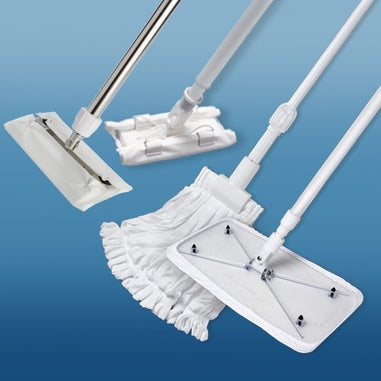- No products in the cart.
Cleanrooms are critical environments used in industries like pharmaceuticals, biotechnology, semiconductor manufacturing, and aerospace, where even the smallest contaminants can lead to significant consequences. Maintaining strict contamination control is paramount in these controlled settings. One essential tool that plays a pivotal role in upholding cleanliness and accuracy is the cleanroom notebook. In this comprehensive guide, we will delve into the unique advantages of using cleanroom notebooks, highlight their design features for contamination prevention, and provide best practices for maximizing their effectiveness in cleanroom settings.
-
The Advantages of Cleanroom Notebooks
1.1. Contamination Prevention:
Cleanroom notebooks are specifically designed to minimize the risk of contamination. They are manufactured from materials that generate fewer particles and have lower levels of outgassing, ensuring they do not release unwanted particles into the cleanroom environment. This safeguard is crucial, as even minute contaminants can negatively impact the production process or scientific research conducted in the cleanroom.
1.2. Compliance with Regulatory Standards:
Industries operating in cleanroom environments must adhere to strict regulatory guidelines. Cleanroom notebooks are designed to meet these stringent requirements, ensuring that data recorded within them is reliable, traceable, and meets the necessary compliance standards. This adherence to regulatory guidelines is vital for companies seeking certification and approval from governing bodies.
1.3. Durability and Archiving:
Cleanroom notebooks are built to withstand the challenges of the cleanroom environment. They are resistant to chemicals and moisture, which are common elements in controlled settings. Furthermore, their durable construction allows for long-term archiving of critical data and research records, contributing to historical documentation and facilitating future reference.

-
Design Features for Contamination Prevention
2.1. Low-Particulate Paper:
Cleanroom notebooks employ low-particulate paper that minimizes the shedding of fibers or particles. This paper is designed to be smooth, reducing the chances of contamination in the cleanroom environment.
2.2. Spiral Binding:
Cleanroom notebooks often utilize spiral binding to ensure the notebook lays flat when opened. This feature prevents pages from becoming loose or dislodged, reducing the risk of paper contamination.
2.3. Laminated Covers:
To safeguard against moisture and chemical exposure, cleanroom notebooks are equipped with laminated covers. This protective layer shields the content and prevents any potential damage to critical data.
2.4. Numbered Pages:
Numbered pages in cleanroom notebooks promote accurate record-keeping and help prevent data duplication or omission. This feature enhances traceability and ensures comprehensive documentation.
-
Best Practices for Using Cleanroom Notebooks
3.1. Proper Training and Awareness:
Ensure that all cleanroom personnel are trained in using cleanroom notebooks effectively. Emphasize the importance of maintaining cleanliness, handling the notebooks correctly, and understanding the significance of accurate data recording.
3.2. Strict Adherence to Cleanroom Procedures:
Incorporate the use of cleanroom notebooks into existing cleanroom procedures and protocols. Encourage employees to follow these guidelines meticulously to prevent errors and maintain the integrity of the cleanroom environment.
3.3. Regular Auditing and Inspection:
Periodically audit cleanroom notebooks to check for proper usage, compliance with documentation practices, and any potential signs of contamination. Regular inspections help identify areas for improvement and ensure the notebooks are functioning as intended.
3.4. Secure Storage and Archiving:
Develop a robust system for storing and archiving cleanroom notebooks after use. Implement proper labeling and indexing to facilitate easy retrieval when required for audits or future reference.
Conclusion
Cleanroom notebooks are indispensable tools for industries operating in controlled environments. By understanding their unique benefits, design features, and best practices for usage, organizations can optimize their cleanroom processes, maintain compliance with regulatory standards, and ensure the accuracy and reliability of crucial data. Adopting cleanroom notebooks as a part of standard operating procedures empowers cleanroom personnel to uphold the highest standards of contamination control, facilitating seamless operations and successful outcomes in diverse industries.
For over 40 years, Lab Pro Inc. has been committed to delivering highest quality cleanroom lab supplies, hand tools, lab equipment, chemicals, distance learning kits, and PPE apparel. Renowned by global medical device companies and laboratories, we ensure exceptional quality in every product. Contact us online or call 888-452-2776 to learn more. Discover top-notch lab supplies and elevate your experiments today!












































